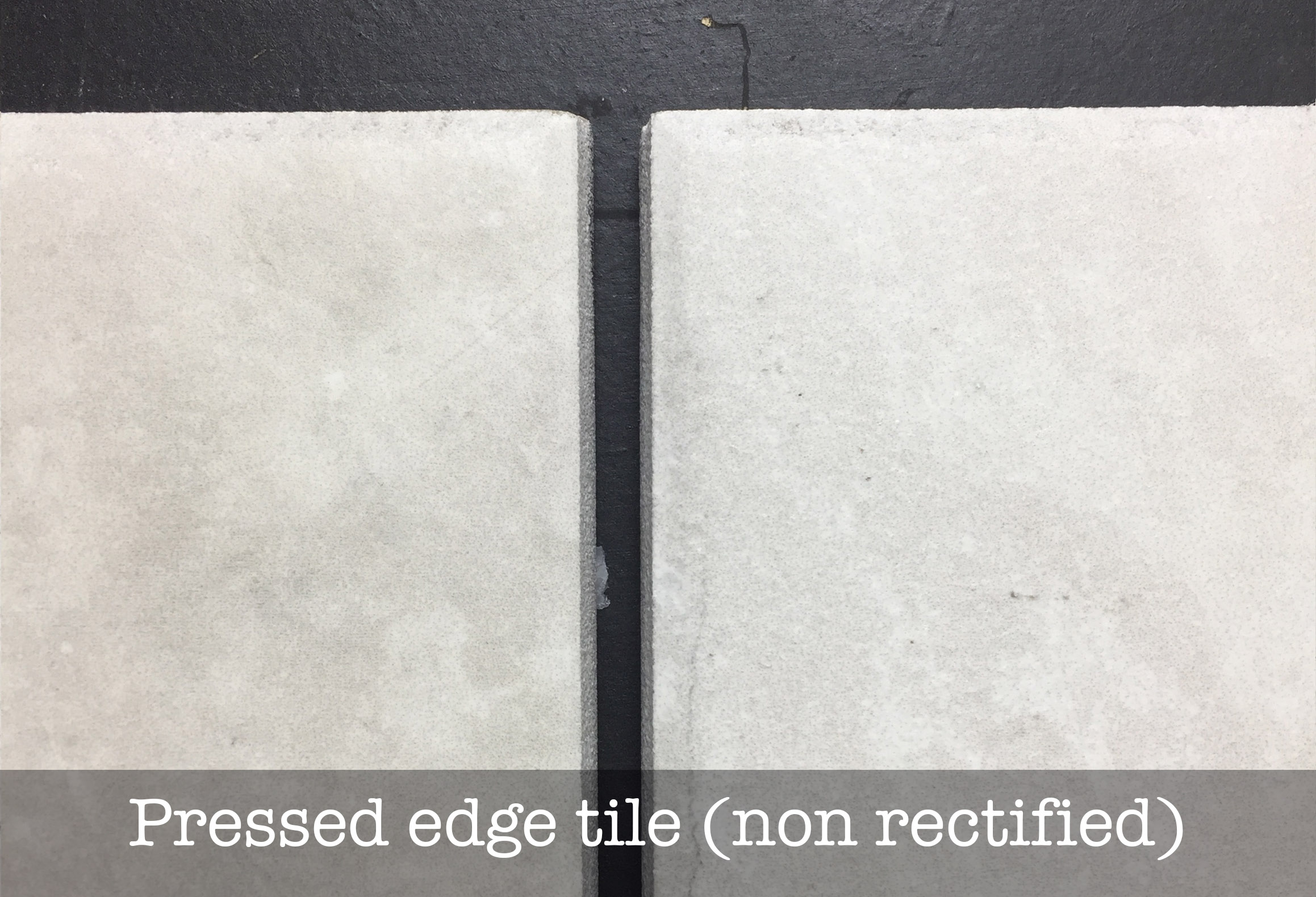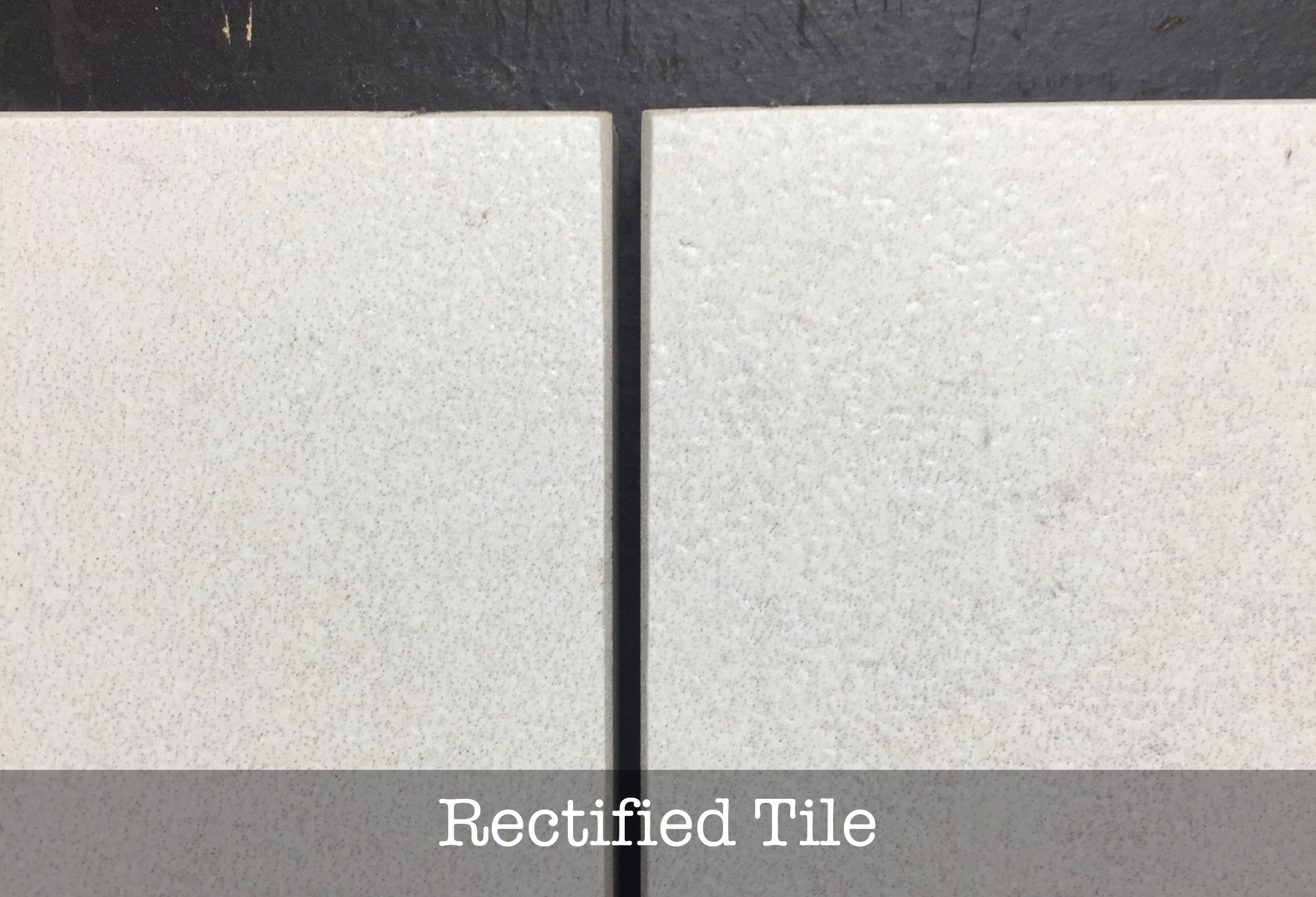A tile that has been rectified has had all its edges mechanically finished in order to achieve a more precise facial dimension. Accurate and consistent tile sizes are particularly important with long and large tiles. The process involves cutting or grinding a tile to a specific size. Both large format tiles and narrower grout joints have recently gained in popularity so rectification has become an important topic.
How they're made.
Rectified tile is first baked in sheets, then cut to size after coming out of the kiln. This is why it can be calibrated to exact specifications. Tiles can expand or contract after firing. Because Rectified tiles are cut to size after firing and after they have cooled to normal operating temperatures they are assured of being accurately sized. Rectified tile can be installed with “credit card” joints of 3mm or less. Most other tile is first shaped and then baked afterwards in a kiln, so it often has as a greater difference in size between tiles in the same box.
Rectified tiles are made bigger than they need to be when they're put in the kiln, to allow for them to be cut back to precisely the right size once they've been fired. The 'rectification' process involves either grinding or cutting the tiles with a diamond saw.
Sharpness.
Rectified tiles are also known as 'dimensionally stable tiles' (which is a bigger mouthful and no more descriptive) - and are often referred to as 'sharp edge' tiles because they can be quite sharp at the edge.
Because of this sharpness and the likelihood that they'll be chipped, a bit of thought needs to go into how they're used for outward facing edges. Where necessary, aluminium tile trim can be used to protect exposed edges. Conventional non-rectified tiles are called cushion-edged, soft-edged or pillow-edged, and aren't as sharp or prone to chipping on their edges.
The appeal.
Because they're very even and uniform, when you're using rectified tiles only the thinnest of grout lines is necessary. The appeal of a sleek, thin grout line's the main reason people choose these tiles. A thin grout line in particular can give an almost seamless look with the right coloured grout and tiles, and it's a fantastic effect when it's well done.
Because they're so carefully produced, rectified tiles can be used to create a very clean, even and symmetrical look.




